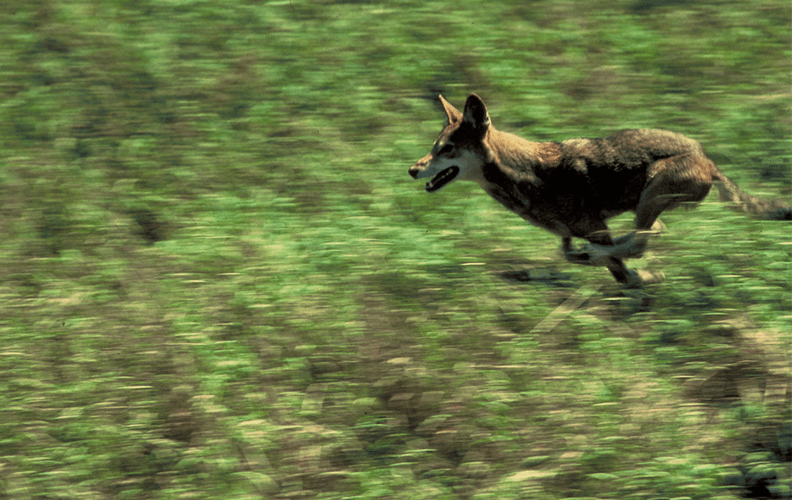We have much more to do and your continued support is needed now more than ever.
Long Road Ahead for Endangered Red Wolves

Facing an Uncertain Future

While North Carolina’s Alligator River National Wildlife Refuge was the first release site with the reintroduction of four male-female pairs in 1987, the red wolf now ranges across three national wildlife refuges, a Department of Defense site, state-administered lands and private property.
Due in part to a breakdown in communication and trust with local landowners and competition for scarce resources for endangered species recovery, the U.S. Fish & Wildlife Service is proposing to reduce the Red Wolf Recovery area to include only the Alligator River National Wildlife Refuge in Dare County, to discontinue release of red wolves into the wild, to capture red wolves from the wild on private lands, and place captured red wolves in the captive breeding program.
This represents a significant shift in the Service’s resource allocations – focusing on the approximately 200 red wolves located at captive breeding facilities across the country. While USFWS intends to explore the potential for new restoration sites across the historical range, the 45 red wolves remaining in the wild face a very uncertain future.
Common-Sense Solutions for Recovery
The Red Wolf Recovery Program has been instrumental in helping to bring red wolves back from the brink of extinction over the last 35 years. Despite its challenges, the program has been vital for combating the imminent threats faced by endangered red wolves.
Recovering the endangered red wolf is complicated, but that’s not a reason to give up. The proposal to shrink the red wolves’ habitat range and remove those remaining from the wild simply defies logic, especially at a time when their primary protected habitat, Alligator River National Wildlife Refuge, is increasingly inundated with water, forcing the wolves to leave the Refuge in search for more suitable habitat.
The only viable solution is to work with willing private landowners to provide needed habitat and reduce threats from coyotes, which are often cross-breading. If Congress is unwilling to provide the resources necessary to conserve the red wolf, the National Wildlife Federation, our state affiliate the North Carolina Wildlife Federation, and other partners stand ready to work with the Service to implement common-sense solutions that will recover their populations.

Next Steps
The U.S. Fish & Wildlife Service is now preparing to publish their decision and proposed action in the Federal Register for public comments as required by Federal administrative procedures. The National Wildlife Federation and North Carolina Wildlife Federation will be closely following this process and submitting comments in support of red wolf recovery.
While red wolves may only currently exist in the wild in eastern North Carolina, the U.S. Fish and Wildlife Service has a responsibility to all citizens of the United States to work towards recovery of the red wolf by improving landowner relations, enhancing communication and transparency, and possibly using incentives for private land owners.
Strong conservation voices from across the country are needed to ensure that the red wolf continues to roam in the wild and not be relegated to captivity. Tweet your support:
Supporting #RedWolf recovery! Calling on @USFWS to ensure red wolves continue to roam in the wild. https://t.co/1dTauYIeVX pic.twitter.com/YEdtUOlye0
— National Wildlife Federation Action Fund (@wildlifeaction) October 28, 2016





















